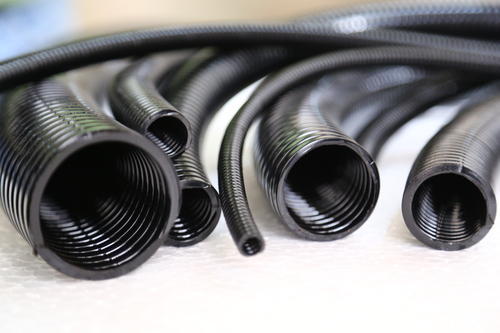When a civil electrical system is in the process of being constructed, the laying of the protective pipes inside of which electrical cables will need to be routed in a safe and orderly fashion is one of the first big phases that will need to be undertaken.
Those who are performing this installation will need to choose the piping that is best suited not just for the electrical system but for accessory systems of the likes of the telephone socket, data and intrusion detection systems and the TV antenna.
Corrugated protective conduits are a very cost-effective form of cable protection that are commonly used by contractors and electricians, being designed for the protection and routing of electrical wiring.
The use of a corrugated conduit suggests that the installation will be well tracked underneath the floor and inside of the walls, but incorporating such a system into walls is not always possible, particularly during the renovation of high-profile buildings.
In such instances, a tidy and safe installation can be achieved with the use of cable ducts.
How to choose corrugated protective conduits
When selecting a corrugated conduit’s diameter, the CEI 64-8 Norm needs to be taken into account, which means that all cables have to be able to be removed, and the corrugated conduit’s internal diameter needs to be one and a half times the average diameter of the cable bundle contained within, at minimum.
The end result needs to be increased by as much as 10% in the event that the route is greater than ten meters or if it features bends, but the diameter must be at least sixteen millimetres at the absolute minimum.
Advantages of corrugated protective conduits
One of the biggest advantages of using corrugated protective conduits is their flexibility, allowing them to adapt to imperfect tracks in walls and while bends of fewer than ninety degrees are obtainable, the best idea is to make the widest bends possible in order to cut down on difficulty during the insertion of cables.
Corrugated conduits can also come in certain colours, depending on the nature of the cables contained within. While not actually mandatory, the colour choice for undertrack conduits is often dictated by the grouping together of similar cables in order to make them easy to identify if maintenance or repairs are needed that require for parts of a building in which they are contained to be demolished, such as a floor or subfloor renovation.
Corrugated conduits that are black or grey thus contain electrical system cables, blue ones contain cables from the intercom system, purple conduits contain cables the audio and video system, and white conduits pass TV and data cables. Meanwhile, green corrugated conduits pass TV, data and telephone cables and brown ones feature cables for alarm systems.
In the end, after the corrugated protective conduits have been installed their presence should be undetectable in rooms, with the only electrical system elements visible being the junction box covers and the switches.

